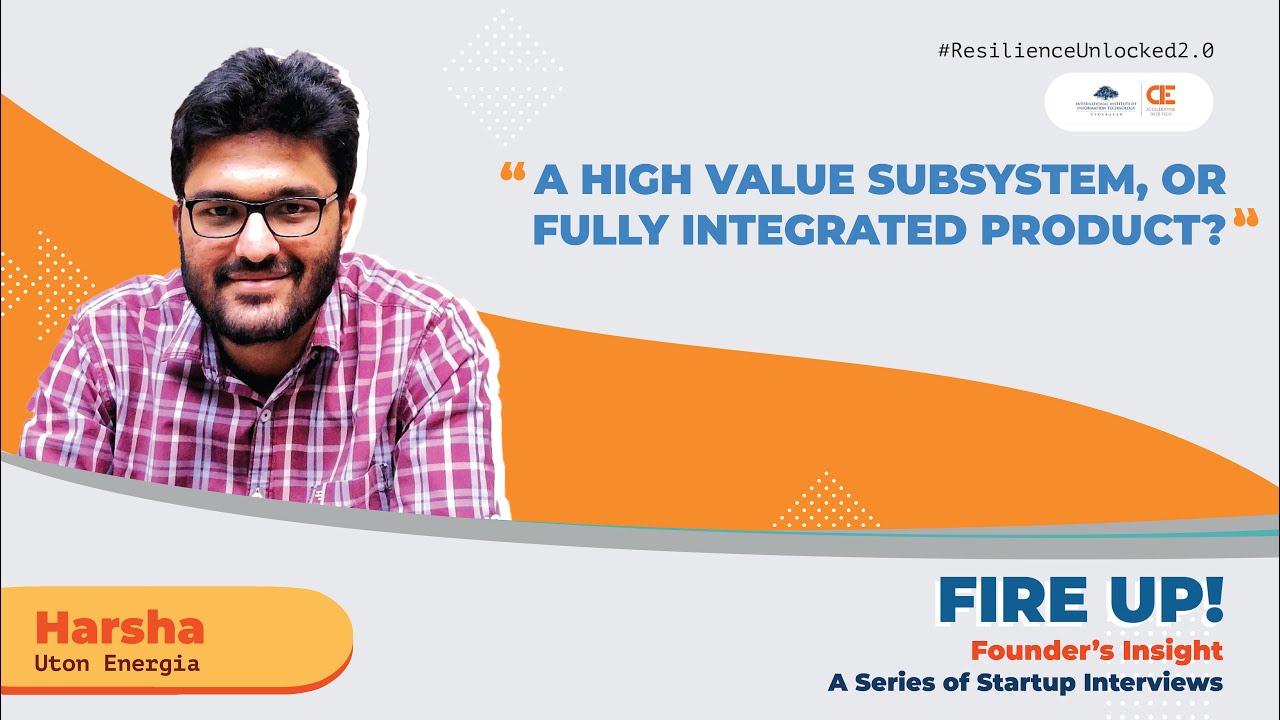CIE brings to our Deeptech community,
Fire Up Founder Insights series 6th edition, hosted by our COO, Mr. Ramesh Loganathan. The series is brought to you as a part of Startup Gyan Blog series by CIE-IIITH where we feature our founders and talk about their Startup status and the journey so far through conversation on specific topics useful for other Deeptech startups and the community at large.
In Conversation with Harsha, founder Uton Energia:
Started in 2019, with the mission of developing the best vehicles by balancing the needs of society with inspired driving experience. The Startup is building a range of light-weight electric city vehicles made from materials that can be optimized for sustainability whilst exceeding the mechanical performance of light-weight, highly priced aluminium framed vehicles. The current product offering is that of an agile electric vehicle optimised for energy and resource efficiency, safety and manufacturing scalability.
“The initial product was a 2-wheeler electric vehicle with a drive-system having an efficiency close to 92% as compared to typical 75-80%”
The team has been thorough into this and hence developed the entire ecosystem around the product, with swappable batter charging station to the vehicle itself. The drive-system is built to retro-fit in any existing 2-wheeler vehicle. The fully developed cost-effective electric vehicle comes with speed charging(<1 hr) and predictive maintenance.
The alternate road:
“The critical challenge lies in the power delivered by the battery to the vehicle and that’s why we chose to focus on the efficiency rather than approaching the OEM path”
Challenges for building a subsystem, Going to OEMs:
- No standardisation in case of batteries for electric vehicles
- Each OEM was using a different battery system, making it challenging to integrate the drive arrangement that we built
- Major part of drive-system manufacturing was happening outside India which posed reliability concerns
- OEMs had their drive-systems fit for the battery system in place
- The big players have a focussed segment to sell the vehicles that they have built
“People know about the Li-ion batteries but the chemistry inside differs heavily from one battery to another; Hero, for example, built a low speed electric 2-wheelers that use Lithium iron phosphate battery while Bajaj 2 wheelers use Li polymer batteries”
The Dilemma:
The team took the path to build a fully integrated product because of the challenges in directly approaching OEMs, but given the current developments in the Battery management system and the accessible knowledge and research in various versions of Li-ion battery, they would have taken the OEM route.
The Growth Hack tip:
Understand the market needs and do the ground work, rather than focussing on being fast to deliver to the customer.
Timing the market entry is an art at the end of the day!
Watch the complete interview for some cool anecdotes and fun facts!
Keep watching this space for more under Fire Up Series.
Stay safe and sound!
– Sunita Kumari, Team CIE


